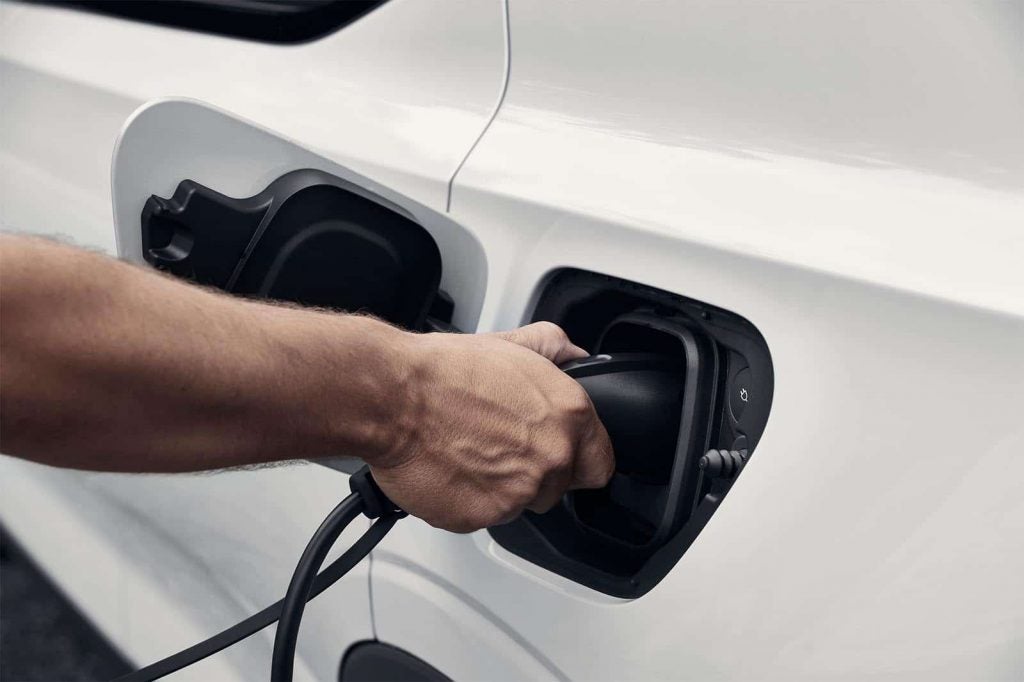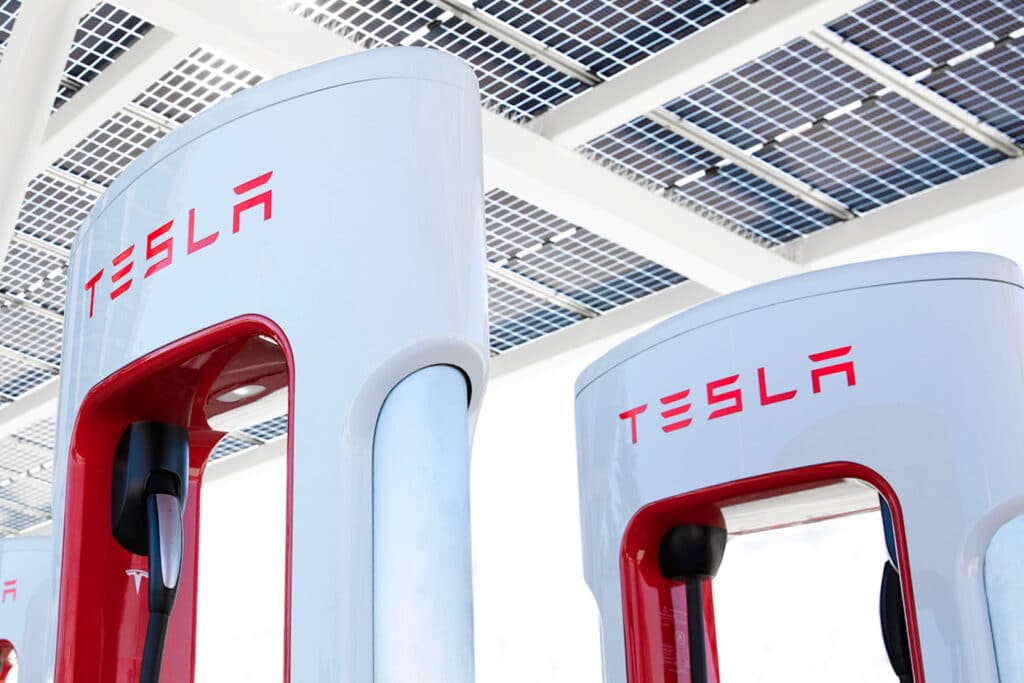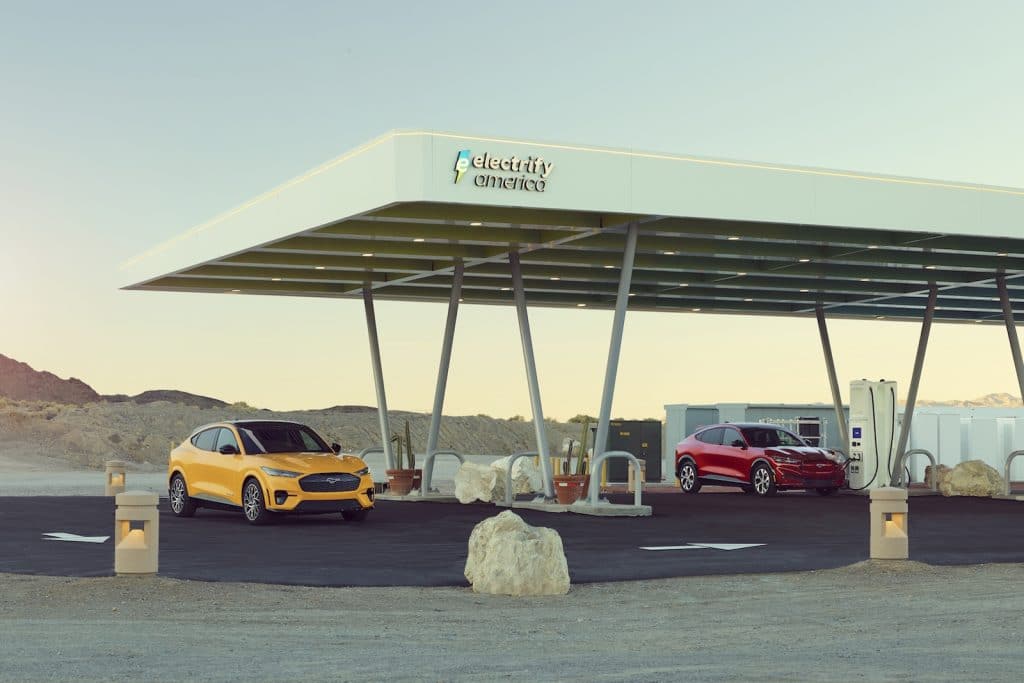Change normally doesn’t come quick to the auto industry, yet it’s taken barely a month for Tesla’s NACS charging plug to become the likely standard going forward.

Since Ford and General Motors first announced plans to switch to the Tesla plug — and gain access to the EV maker’s Supercharger network — in late May, a number of other automotive manufacturers have signed on, including Stellantis, Volvo and Polestar. Even Verge Motorcycles said it will to make the switch. And several key charger companies say they’ll add plugs compatible with Tesla’s NACS — or North American Charging Standard — including Electrify America.
“Since our founding, we have focused on building an inclusive and open hyper-fast charging network to facilitate the adoption of electric vehicles,” Robert Barrosa, president and CEO of Electrify America, said in a statement issued Thursday. “We look forward to continuing to support industry-wide standards that increase vehicle interoperability and streamline public charging.”
From three plugs to one
Right now, there are three different charger plug standards used in the U.S. for quick-chargers — though several others are in use abroad. Nissan, the first automaker to introduce a mainstream battery-electric vehicle, went with the Japanese CHAdeMO plug. But that standard had its problems and failed to catch on. Even the Japanese automaker switched to the more widely accepted CCS standard with its newest EV, the Nissan Ariya.

The CCS plug seemed to be on its way to becoming the universal standard, leaving Tesla as the other outlier with the NACS standard.
Which of the two is the better plug has been a matter of debate. But Tesla has one thing working in its favor: its network of Superchargers which can be found all over the country, about 12,000 in all. Arguably, there are more chargers using the CCS plug but they’re less evenly spaced out, with large gaps in coverage, especially in more rural parts of the country. Tesla has made a point of ensuring you’re never more than 50 to 75 miles away from a Supercharger anywhere in the U.S. and Canada.
Ending “charger anxiety”
The Tesla system also has a higher reliability rate than other networks, industry analysts say.
All told, those are big advantages, according to research such as the J.D. Power Tech Experience Index released this month. It found that “charger anxiety” is becoming more of a concern for both EV owners and potential buyers than range anxiety.
That led both Ford and GM to announce deals with Tesla this month. They’ll not only provide their EV owners access to the Supercharger network but switch from CCS plugs to NACS starting in the 2025 model year.

With those alliances in place, there’s been an accelerating shift across the industry. Stellantis quickly followed, then Volvo and, on Thursday, the Swedish automaker’s EV spinoff Polestar.
“A great win”
“This is a great win for our North American customers,” exclaimed Thomas Ingenlath, Polestar’s CEO, in a news release. “We salute the pioneering work Tesla has done to speed up the adoption and increase the popularity of electric vehicles, and it’s great to see the Supercharger network being made available in this way. With 12,000 charging points today, a number that will only keep growing, this move will greatly increase the rate of EV adoption in a key automotive region.”
Indeed, Tesla was expected to substantially expand the Supercharger network even before the recent spate of alliances was announced. That was part of a deal CEO Elon Musk approved in order for the automaker to get some of the billions of dollars the Biden administration was preparing to hand out to build up the U.S. charger network. The new wrinkle is having other manufacturers migrate to NACS ports on their vehicles, most starting in 2025, rather than forcing motorists to carry around adapters.

“It’s only a matter of time before no one is building new EVs with CCS connectors on them,” Sam Abuelsamid, lead auto analyst with Guidehouse Insights, told the Associated Press.
A fait accompli
In what could be the fait accompli, SAE International, what was formerly known as the Society of Automotive Engineers, this week announced it will formally set up broader standards for NACS. That’s a critical step to make sure that Tesla and everyone else will be able to plug-and-play. Simply using the same port doesn’t ensure every vehicle will be able to use a Supercharger. It also requires additional hardware and software revisions to allow a Ford or Volvo to actually start charging.
Using a NACS charger may be “seamless to the Tesla user,” Conrad Layson, a senior alternative propulsion analyst at AutoForecast Solutions, told Automotive News. But, he cautioned, “There are hookups and connections that go beyond the simple handshake signal.”
That helps explain why most of Tesla’s new partners are looking at 2025 to make it possible to use the Supercharger network — though Ford CEO Jim Farley said his goal is to make it all work by sometime next year.
- SEO Powered Content & PR Distribution. Get Amplified Today.
- PlatoData.Network Vertical Generative Ai. Empower Yourself. Access Here.
- PlatoAiStream. Web3 Intelligence. Knowledge Amplified. Access Here.
- PlatoESG. Automotive / EVs, Carbon, CleanTech, Energy, Environment, Solar, Waste Management. Access Here.
- BlockOffsets. Modernizing Environmental Offset Ownership. Access Here.
- Source: https://www.thedetroitbureau.com/2023/06/only-a-matter-of-time-until-everyone-adopts-the-tesla-charger-standard/



